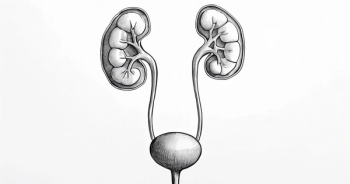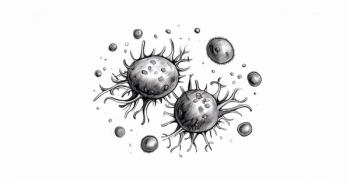
- Immunotherapy (Issue 5)
- Volume 5
- Issue 1
Immune-Related AEs and Their Management: Q & A With Michael A. Postow, MD
Targeted Oncology had the honor of discussing with Michael A. Postow, MD, the management of immune-related adverse events (IRAEs).
Michael A. Postow, MD
Michael A. Postow, MD, is an assistant attending physician in the Melanoma and Immunotherapeutics Service at Memorial Sloan Kettering Cancer Center in New York City.Targeted Oncologyhad the honor of discussing with him the management of immune-related adverse events (IRAEs).
What are the most important IRAEs associated with these therapies?
What are the less commonly observed adverse events with these agents?
We know that immunotherapy agents are entering greater clinical use in oncology, such as anti-cytotoxic T-lymphocyte-associated protein 4 (anti-CTLA-4, eg, ipilimumab), anti-programmed death 1 (PD-1, eg, nivolumab), and anti-programmed death ligand 1 (PD-L1, eg, MPD3280A, BMS-936559, and others).For ipilimumab and for PD-1 inhibitors as well, the most common side effect is dermatologic toxicity. Typically, the rashes that people will have are erythematous, a red rash occurring on the trunk, arms, or lower extremities. With ipilimumab alone, the dermatologic toxicity onset is typically within the first month, even after the first dose of treatment. Rash or dermatologic toxicity, however, can happen at any time after the first dose, and, at least with ipilimumab, I have seen them occur after all 4 doses have been given, even when the patient has tolerated the initial treatment course well.For ipilimumab in particular, a less common side effect is an enterocolitis/colitis-like event, which typically manifests as diarrhea. Although less common than skin rash, this is a more dangerous event that clinicians need to understand. This is more common with the ipilimumab-type drugs than with the PD-1 drugs, but it can occur with both. If it occurs, the diarrhea or enterocolitis will typically set in after the second or third dose.
What are the general strategies for managing these events (eg, dose reduction, discontinuation, corticosteroids)?
Although less frequent than colitis and diarrhea, endocrinopathies may also occur, as well as hepatitis or inflammation of the liver. [The] frequency of these events depends how one defines the endocrinopathies and hepatitis and their severity, but generally these would rank as number 3 and 4 after dermatologic events and diarrhea. One type of endocrinopathy that can be often hard to diagnose is hypophysitis, which is inflammation of the pituitary gland; this may present as headaches, fatigue, and other nonspecific symptoms.Rash is typically managed first with topical corticosteroids, such as triamcinolone cream, hydrocortisone cream, or another low-potency corticosteroid. If that is insufficient, some people require oral steroids for very severe rashes, or [rashes] that affect so much of the body surface area that the cream cannot be applied successfully. Some patients will just have a lacy, faint, erythematous rash that doesn’t bother them, and some patients will just be itchy without a rash, which can also be problematic, since people can be very bothered by itching. The maximal treatment one would ever consider for a rash, if it were terriblewhich is, fortunately, very rare —[is when] people would come into the hospital for fluids, electrolyte management, and IV steroids. In most cases, though, the rashes can be managed and the drug can be continued.
Diarrhea can happen with or without colitis in about a third of patients, and can be significant in about 10% of patients. In terms of treatment, first you would ensure that you have excluded other etiologies, for example,Clostridium difficileor other infectious types of diarrhea. Typical treatment, when you have substantial diarrhea, is oral corticosteroids, so prednisone, orally. The ipilimumab package insert has algorithms with number of stools per day and so on to recommend discontinuing treatment, but in the broad context, if patients are on steroids for anything more than a mild situation, they generally don’t resume ipilimumab. Imodium, other types of antidiarrheals, and a bland diet can also help if the symptoms are mild.
Have any notable differences in IRAEs emerged for the anti-CTLA-4 versus the anti-PD-1/PD-L1 agents?
Are there any rare/serious AEs associated with these therapies that clinicians should be especially vigilant for?
Drawing a thyroid stimulating hormone (TSH) level and a liver function test (LFT) is required before starting, and with each dose of ipilimumab endocrinopathies or hepatitis can be detected [often] in this way. Patients with events such as LFT abnormalities will often not be symptomatic, and these can usually be corrected with oral steroids. Endocrinopathies can be more difficult to correct. When an endocrinopathy ensues, it’s typically a permanent problem, which means patients will need to take hormone supplements long-term, usually for life.In my experience, the anti-PD-1/PD-L1 agents have been less likely to cause significant side effects than anti-CTLA-4 agents like ipilimumab. There are a lot of theories as to why that might be the case; some think it may be due to the fact that [anti-PD-1/PD-L1 agents] are acting at the point where the tumor cells are interacting with the T cells, which keeps some of the activation of the immune system localized in the tumor itself, as opposed to more nonspecifically and systemically throughout the body. Others think that agents like ipilimumab work in part by depleting regulatory T cells throughout the body, which may also account for the more systemic immune stimulation with ipilimumab versus the anti-PD-1/PD-L1 agents.Pneumonitis, or lung inflammation, with the anti-PD-1 agents, is very important because it did, unfortunately, result in some treatment-related deaths. This is particularly important now that anti-PD-1 agents like nivolumab are expanding into indications like lung cancer. Patients may experience, for example, fever or shortness of breath that can be attributable to many other causes within this disease state. Pneumonitis may be treated with steroid immunosuppression or IV steroids as needed, and some patients may require bronchoscopy to exclude infection as part of the differential diagnosis. Other rare neurologic conditions may also occur; we have had patients with aseptic meningitis, sensory and motor neuropathies, and even GuillainBarré syndrome, and I mention these [because] they can be life-threatening if not recognized and treated appropriately.
Would you expect a different profile of IRAEs when combining these checkpoint inhibitors with either (a) each other, or (b) other types of immunotherapy (eg, cancer-targeted vaccines)?
Further Reading
In addition, patients who have IRAEs requiring steroids or other immunosuppressive agents like infliximab for diarrhea, or sometimes mycophenolate for transaminitis that is not responsive to steroids, have, in some anectdotal cases, acquired opportunistic infections as a result of their subsequent immunosuppression. We had, for example, a patient withAspergillusinfection that we recently reported in the literature. I would stress that, so far, these have been only isolated cases, and it’s not clear whether this type of event may become an epiphenomenon with increasing use of these agents, but it’s certainly another possible event to be aware of.When combining nivolumab and ipilimumab, there seemed to be the same kind of side effects as with either of the 2 drugs used alone. So not a lot of new side effects with the combination, but they seem to be more frequent when you combine, than when you give them by themselves. As far as vaccines go, it can be hypothesized that such a combination might even reduce the toxicity of these agents by increasing the specificity. The only experience we really have with that would probably be the phase III ipilimumab study, when the glycoprotein 100 (gp100) vaccine was combined with ipilimumab versus ipilimumab alone. From my impression of the data, it did not seem that adding gp100 changed the toxicity profile of ipilimumab to a significant degree.Postow has recently authored an uptodate.com article on IRAEs and their management that can beaccessed here.
Postow will be contributing a forthcoming review on immunotherapy-related side effects for the American Society of Clinical Oncology (ASCO), and will also be presenting on the topic at this year’s ASCO Meeting.
<<<
Articles in this issue
over 10 years ago
The Rationale for Immunotherapy in NSCLCover 10 years ago
Maximizing Immunotherapy Approaches in Hard-to-Treat Cancersover 10 years ago
Rich Immunotherapy Pipeline for Melanoma Under Wayover 10 years ago
Tumor Antigens and Their Role in Immune Response in Melanomaover 10 years ago
Major Programs Under Way in Immuno-Oncologyover 10 years ago
PD-1 Inhibitors for Melanomaover 10 years ago
Immunotherapy in GU Cancers









































